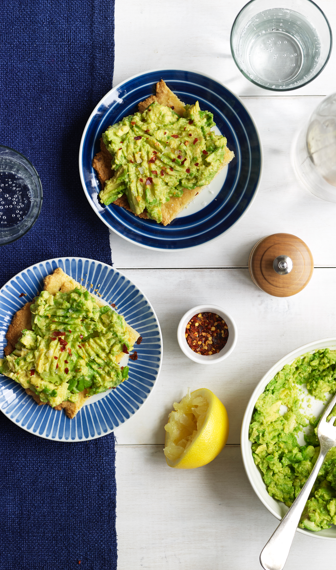It’s a wonderful feeling when you’ve lost a few pounds (or 50!) on Atkins and your friends and family start to notice. After seeing your results, they may even want to start Atkins, too. Here’s what you need to answer their questions and help get them started:
How does Atkins work? Your body burns both glucose (sugar), from carbohydrates, and fat for energy. The body will burn glucose first because it converts quickly to energy. When insufficient carbohydrates are available the body will switch to fat, your backup fuel, and the fat metabolism does the job just as well. Controlling carbs means that you burn fat, including your own body fat, which kick-starts weight loss.
Is Atkins safe? Atkins has always been about limiting—not eliminating—carbs, and choosing those with the most fiber, vitamins, minerals and a host of other nutrients. The Atkins principles are firmly grounded in science. At least 80 research studies published in peer-reviewed journals confirm the safety and efficacy of Atkins. In fact, emerging science consistently shows that compared to low-fat diets, low-carb diets produce greater weight loss and better compliance.* Plus, when people followed a low-carb diet, or specifically the Atkins protocols, certain risk factors for a host of conditions improved. These include improvement in markers for heart disease, elevated blood sugar and elevated insulin levels.
Four Phases for a Lifetime of Healthy Eating In all four phases, you’ll savor protein foods such as fish, poultry, meat and tofu and healthy fats such as olive oil and avocado, plus healthy carbohydrates. In Induction, these healthy carbs are primarily vegetables. You’ll add a greater variety of whole food carbs in subsequent phases. As you increase your carb intake in each phase, you’ll gradually rebalance your intake of the three major food groups.
First you’ll shed pounds on Atkins, and then you’ll learn how to maintain your healthy goal weight—for good. Here’s how you’ll do it:
Induction: Phase 1 lasts for a minimum of two weeks. Feel free to remain here longer if you have lots of weight to lose. Consume 20 grams of net carbs (total grams of carbs minus grams of fiber) daily, primarily as veggies. In addition to at least 12 grams of veggies (five or more servings), you’ll eat protein and healthy, natural fats. Avoid foods made with sugar or flour and other refined grains.
Ongoing Weight Loss (OWL): In Phase 2, slowly add back more veggies and then foods such as berries, nuts, and Greek yogurt. Increase your daily carb intake in 5-gram increments each week as long as you continue to lose weight. When it stops, you’ve found your tolerance for consuming carbs, known as your carbohydrate level for losing (CLL). Most people remain in OWL until they’re about 10 pounds from their goal weight.
Pre-Maintenance: In Phase 3, continue to reduce fat intake as you add more healthy carbs. They’ll include still more vegetables—including starchy ones—plus fruits other than berries, legumes and whole grains. As long as you continue to lose, increase your daily carb intake by 10 grams of net carbs each week until you reach your goal weight. Then, find your Atkins carb equilibrium (ACE), the highest carb intake that lets you maintain your weight. Stay in Pre-Maintenance until your weight is stable for a month and re-introducing new foods doesn’t provoke cravings. If your carbohydrate tolerance turns out to be above the 100-gram mark, you will begin to slowly cut back on fat intake.
Lifetime Maintenance: Phase 4 isn’t really a phase. It’s the rest of your life. Continue to consume the varied whole-foods diet of Pre-Maintenance, remaining at your carbohydrate balance (ACE). Monitor your weight and measurements regularly. Continue to reintroduce carbohydrate foods—as long as they don’t cause weight gain or stimulate cravings. By this time, most people can handle an occasional indulgence, with the emphasis on occasional. Correct any small weight gain—fast—by returning to an earlier phase.
* New England Journal of Medicine, July 2008: Two-year study reports 50% greater weight loss and improved cholesterol on a low-carb vs. low-fat diet.

